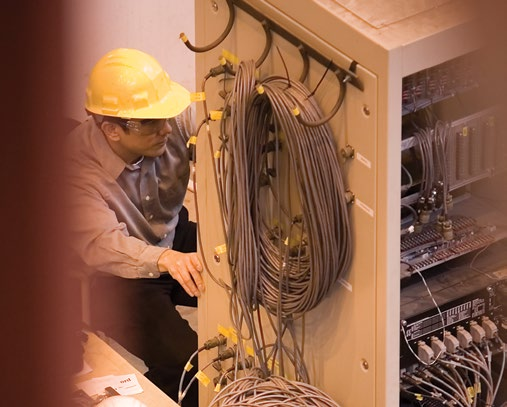In Lehigh’s ATLSS (Advanced Technology for Large Structural Systems) Center, researchers use HPC to help design structures that can withstand earthquakes without damage. On a three-story building, they have installed diagonal braces fitted with dampers made of elastomeric, viscous, magnetorheological and other materials currently used in shock absorbers and suspension systems.
The researchers combine physical experiments with numerical models in a “hybrid simulation” that evaluates the performance of a structural system and all of its structural elements under earthquake excitations. The project, directed by James Ricles, professor of structural engineering, along with ATLSS director Richard Sause, is funded by NSF through its NEES (George E. Brown Jr. Network for Earthquake Engineering Simulation) program.
Hybrid simulation, says Ricles, is useful when some parts of a system are understood well enough to be mathematically modeled while other parts are not and must be tested physically in the lab. In the current project, a grid of parallel processors, or experimental coordinator, imposes the effects of earthquake loading simultaneously on the braces and dampers in the lab and on a computer model of the building and remaining elements. The laboratory and computer models are coupled through their common degrees of freedom, or equations. The coordinator and both portions of the test are linked by a local area network that transmits messages in nanoseconds over a fiber-optic cable.
Tests are run in real time to obtain more accurate data about the dampers, whose “rate-dependent” materials respond both to the cumulative effect of stresses and to the speed at which they are imposed.
The experimental coordinator commands hydraulic actuators to impose deformations on the dampers and braces approximately 1,000 times a second and from multiple directions. These “command displacements” simulate the multidirectional loading and ground motion, or acceleration, caused by an earthquake. A numerical integration algorithm calculates the displacements and the responses they elicit from structural elements, dampers and braces. The coordinator, says Ricles, must solve equations of motion and prepare command displacements every one-thousandth of a second in a recursive manner.
One goal is to determine how well dampers can enhance the seismic performance of a structural system. If successful, says Ricles, the dampers will enable beam-to-column connections and other elements to move and then return to their original position following an earthquake. This would allow a structure to survive an earthquake without damage or loss of life while avoiding costly repair time when it cannot be used.
Future hybrid simulations, says Ricles, will be performed for each type of earthquake ground motion and for a variety of structural designs. HPC will enable researchers to conduct large-scale simulations to evaluate systems with more variables and equations.


